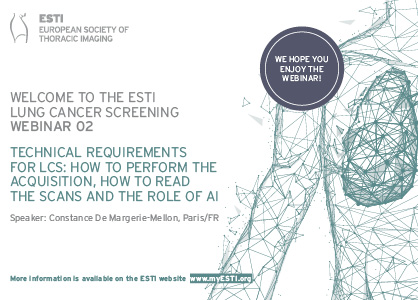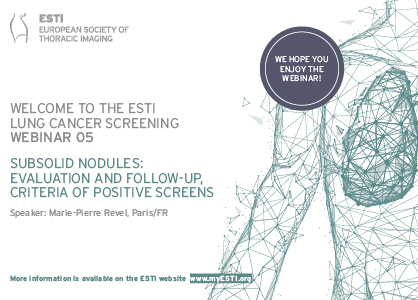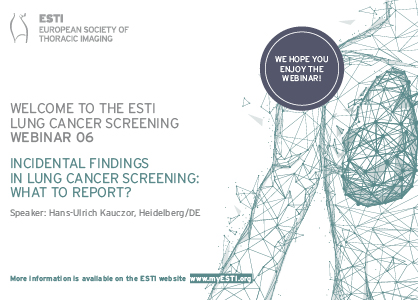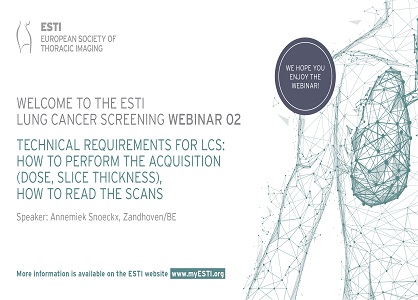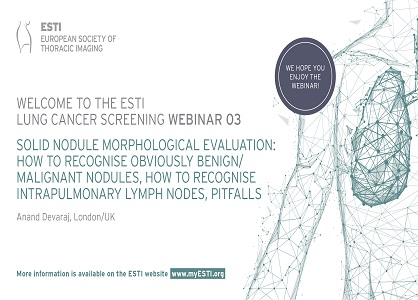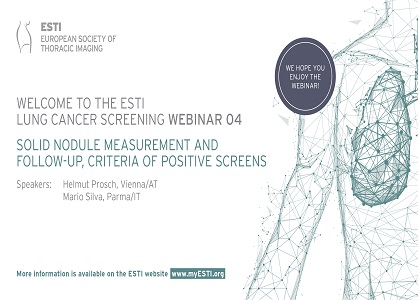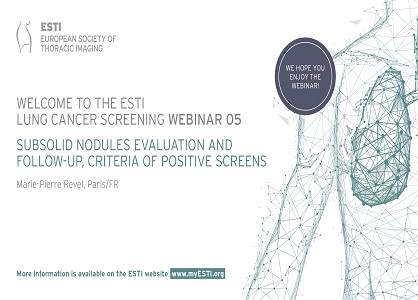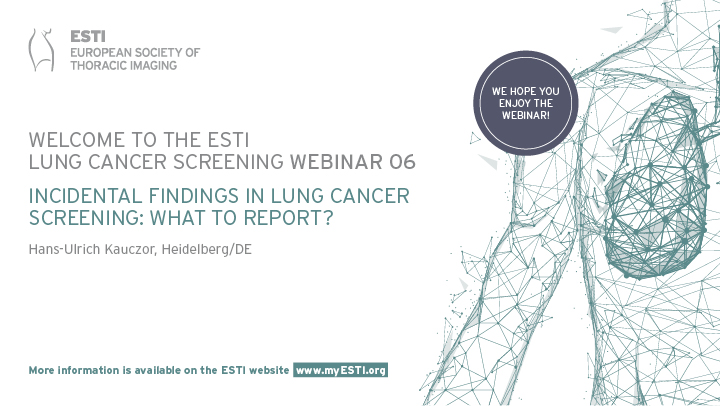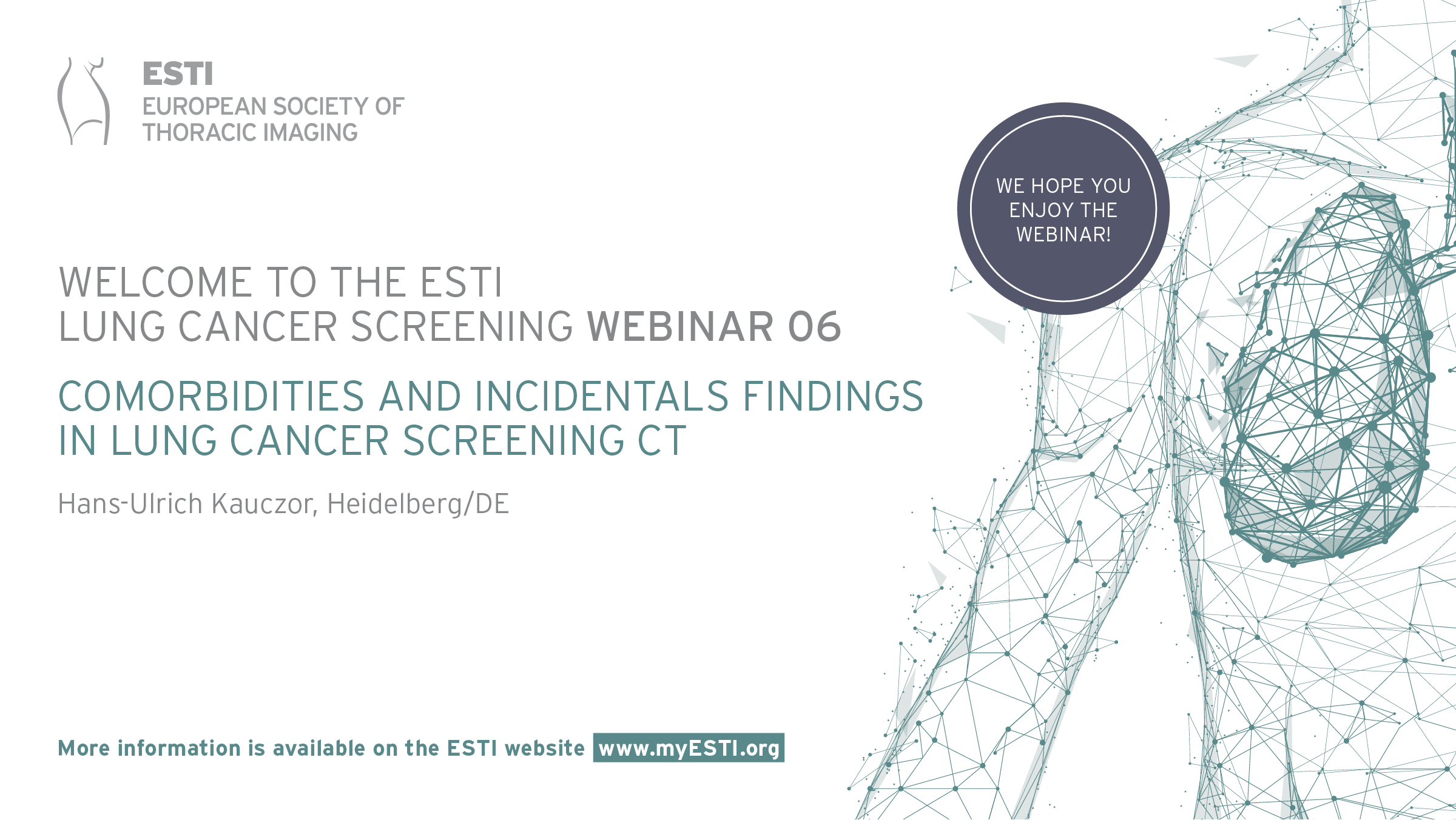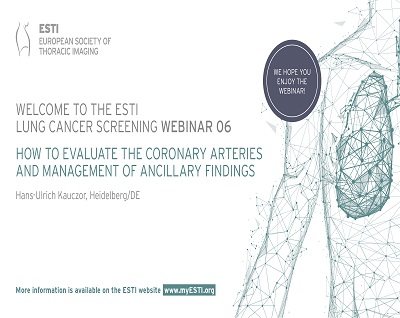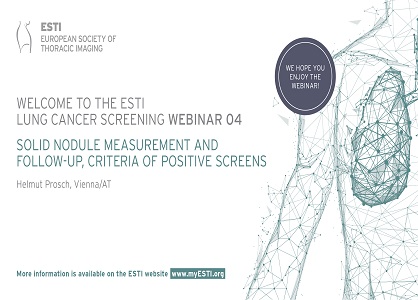General Information
UEMS CME Accreditation 2024
We are pleased to inform you that all webinars 2024 have been granted 1 European CME credit (ECMEC®s) by the European Accreditation Council for Continuing Medical Education (EACCME®).
Attendees need to attend the live webinar AND evaluate the webinar to receive the CME certificate.
The certificate of attendance/CME certificate will be sent 1 week after the live webinar.
UEMS CME Accreditation 2025
An application for UEMS CME accreditation for the 2025 LCS webinars will be submitted.
Recommended Bandwidth
The website www.speedtest.net offers you to check your bandwidth. We strongly recommend
• Upload min. 6Mbit required bandwidth (relevant for speakers, moderators sharing their camera and audio signal)
• Download min. 6Mbit required bandwidth
Also, we recommend a cable internet or a wireless connection with full signal.
Please note: Shared bandwidth (e.g. hospital, universities) will result in lower bandwidth for each user.
The webinars are open for
– all interested persons
– persons who have actively subscribed for the LCS certification (Step 1 of the programme outline)
Exclusive Sponsor 2024
- LCS Webinar 6.02
- LCS Webinar 6.03
- LCS Webinar 6.04
- LCS Webinar 6.05
- LCS Webinar 6.06
- LCS Webinar 7.01
- LCS Webinar 7.02
- LCS Webinar 7.03
- LCS Webinar 7.04
Monday, October 28, 18:00 CEST
Technical requirements for LCS: How to perform the acquisition, how to read the scans and the role of AI
Speaker: Constance De Margerie-Mellon, Paris/FR | Moderator: Thomas Frauenfelder, Zurich/CH
General description, scope and objectives of this webinar
This webinar will cover CT technical requirements and standardized reading criteria for LCS and will also underline the role of AI in chest CTs performed for LCS.
Meeting the technical requirements when performing chest CTs in the framework of LCS is important, to ensure a satisfying image quality while respecting the recommended radiation dose thresholds. Using appropriate and consistent reading criteria is also critical. As most detected nodules during screening are benign, such criteria allow adequate active management in case of suspicious nodule and imaging follow-up in indeterminate cases, while avoiding overdiagnosis. Finally, AI applications in LCS are booming and the number of AI-based commercial software is constantly growing. Strengths and weaknesses of AI for LCS will be discussed.
It is aimed at thoracic/chest radiologists, radiologist residents/juniors, students and people who are interested in the ESTI LCS certification project who want to improve their skills in:
– Building a CT protocol for performing LCS at the recommended radiation dose level
– Knowing about existing reading criteria for prevalent and incident lung nodules discovered on screening CTs
– Reviewing the potential role of AI for lung nodule detection, lung nodule classification, and for detection of associated comorbidities
After listening to the webinar, participants will:
– Understand the importance of morphology in distinguishing benign and malignant nodules
– Recognised typical features of intrapulmonary lymph nodes
– Appreciate the morphological appearances of atypical lung cancers
About the speaker:
Constance de Margerie-Mellon, MD, PhD, is a thoracic radiologist and an assistant professor at Université Paris Cité and at Saint-Louis Hospital, Paris, France. Her specific field of research and clinical practice include thoracic oncology, especially lung nodules and lung cancer screening. She is highly involved in the promotion of LCS in France through the French Society of Thoracic Imaging. She serves as an expert for the French Institute of Cancer regarding LCS and is an investigator for the ongoing CASCADE study, a prospective feasibility study of LCS among French women. She is the author or co-author of more than 60 peer-reviewed publications.

Monday, November 11, 18:00 CET
Solid nodule morphological evaluation: How to recognize obviously benign/malignant nodules, how to recognize intrapulmonary lymph nodes, pitfalls
Speaker: Anand Devaraj, London/UK | Moderator: Ieneke Hartmann, Rotterdam/NL
General description, scope and objectives of this webinar
The programme of this webinar will emphasise the importance of morphological assessment in lung nodule management. It is aimed at thoracic/chest radiologists, radiologist residents/juniors, students and people who are interested in the EST LCS certification project who want to improve their skills in:
– Management of incidental and screen detected nodules
After listening to the webinar, participants will:
– Understand the importance of morphology in distinguishing benign and malignant nodules
– Recognised typical features of intrapulmonary lymph nodes
– Appreciate the morphological appearances of atypical lung cancers
Monday, December 09, 18:00 CET
Solid nodule measurement and follow-up, criteria of positive screens
Speaker: Mario Silva, Parma/IT | Moderator: Helmut Prosch, Vienna/AT
General description, scope and objectives of this webinar
The programme of this webinar will cover the management of screen detected solid pulmonary nodules. It is aimed at thoracic/chest radiologists, radiologist residents/juniors, students and people who are interested in the ESTI LCS certification project who want to improve their skills in:
– the risk prediction of solid pulmonary nodules
– the management of solid pulmonary nodules in lung cancer screening
After listening to the webinar, participants will:
– know how to classify solid pulmonary nodules
– understand the importance of a volumetric assessment of pulmonary nodules
– understand the rationale behind follow-up examinations
Monday, January 27, 18:00 CET
Subsolid nodules: Evaluation and follow-up, criteria of positive screens
Speaker: Marie-Pierre Revel, Paris/FR | Moderator: Arjun Nair, London/UK
General description, scope and objectives of this webinar
The programme of this webinar will cover the topic of subsolid nodules. It is aimed at thoracic/chest radiologists, radiologist residents/juniors, students and people who are interested in the ESTI LCS certification project who want to improve their skills in:
– the understanding of the pathological /radiological correlations
– the recognition of morphological features increasing the probability of invasive adenocarcinoma
After listening to the webinar, participants will:
– distinguish between pure ground glass and part-solid nodules
– report relevant CT features such as significant growth
– understand the concept of overdiagnosis
Monday, February 17, 18:00 CET
Incidental findings in lung cancer screening: What to report?
Speaker: Hans-Ulrich Kauczor, Heidelberg/DE | Moderator: Mathias Prokop, Nijmegen/NL
General description, scope and objectives of this webinar
The programme of this webinar will cover the most important comorbidities and incidentals findings in lung cancer screening CT. It is aimed at thoracic/chest radiologists, radiology residents/juniors, students and everybody who are interested in the ESTI LCS certification project and want to improve their skills in:
– the detection and categorization of comorbidities and incidental findings
– the decision to not report insignificant incidental findings
– the management of actionable incidental findings
After listening to the webinar, participants will:
– have gained insight in the rationale of comorbidities and incidental findings of low dose CT in LCS
– have learnt about the significance of cardiovascular and obstructive airway disease for mortality in the LCS population and the Big 3 approach
– have consolidated knowledge about incidentals as being actionable, reportable and not-reportable
– be aware of statements and guidance on management of important incidentals
Monday, September 22, 18:00 CEST
Lung cancer screening trials: Current evidence and remaining questions
Speaker: Anna Rita Larici, Rome/IT | Moderator: Anagha P. Parkar, Bergen/NO
General description, scope and objectives of this webinar
The programme of this webinar will cover a summary of results of lung cancer screening studies. It is aimed at thoracic/chest radiologists, radiologist residents/juniors, students and people who are interested in the ESTI LCS certification project who want to improve their skills in:- Building a CT protocol for performing LCS at the recommended radiation dose level
– About the essential parts that influence a lung cancer program
– About the results of randomized and non-randomized trials thus far
After listening to the webinar, participants will:
– Compare the set ups of the various studies and their impact on results
– Appreciate new insights that have been gained after the publication of the two randomized trials, the NLST and the Nelson trial
– Judge which aspects are subjects of ongoing research in an attempt to further improve lung cancer screening
Monday, October 13, 18:00 CEST
Technical requirements for LCS: How to perform the acquisition, how to read the scans and the role of AI
Speaker: Constance De Margerie-Mellon, Paris/FR | Moderator: Thomas Frauenfelder, Zurich/CH
General description, scope and objectives of this webinar
This webinar will cover CT technical requirements and standardized reading criteria for LCS and will also underline the role of AI in chest CTs performed for LCS.
Meeting the technical requirements when performing chest CTs in the framework of LCS is important, to ensure a satisfying image quality while respecting the recommended radiation dose thresholds. Using appropriate and consistent reading criteria is also critical. As most detected nodules during screening are benign, such criteria allow adequate active management in case of suspicious nodule and imaging follow-up in indeterminate cases, while avoiding overdiagnosis. Finally, AI applications in LCS are booming and the number of AI-based commercial software is constantly growing. Strengths and weaknesses of AI for LCS will be discussed.
It is aimed at thoracic/chest radiologists, radiologist residents/juniors, students and people who are interested in the ESTI LCS certification project who want to improve their skills in:
– Building a CT protocol for performing LCS at the recommended radiation dose level
– Knowing about existing reading criteria for prevalent and incident lung nodules discovered on screening CTs
– Reviewing the potential role of AI for lung nodule detection, lung nodule classification, and for detection of associated comorbidities
After listening to the webinar, participants will:
– Apply the recommended technical requirement for performing chest CT in the LCS framework
– Indicate the adequate management for lung nodules detected during LCS
– Use AI tools for lung nodule detection while being aware of their limitations
Monday, November 10, 18:00 CET
Solid nodule morphological evaluation: How to recognize obviously benign/malignant nodules, how to recognize intrapulmonary lymph nodes, pitfalls
Speaker: Anand Devaraj, London/UK | Moderator: Ieneke Hartmann, Rotterdam/NL
General description, scope and objectives of this webinar
The programme of this webinar will emphasise the importance of morphological assessment in lung nodule management. It is aimed at thoracic/chest radiologists, radiologist residents/juniors, students and people who are interested in the EST LCS certification project who want to improve their skills in:
– Management of incidental and screen detected nodules
After listening to the webinar, participants will:
– Understand the importance of morphology in distinguishing benign and malignant nodules
– Recognised typical features of intrapulmonary lymph nodes
– Appreciate the morphological appearances of atypical lung cancers
Monday, December 01, 18:00 CET
Solid nodule measurement and follow-up, criteria of positive screens
Speaker: Mario Silva, Parma/IT | Moderator: Helmut Prosch, Vienna/AT
General description, scope and objectives of this webinar
The programme of this webinar will cover the management of screen detected solid pulmonary nodules. It is aimed at thoracic/chest radiologists, radiologist residents/juniors, students and people who are interested in the ESTI LCS certification project who want to improve their skills in:
– the risk prediction of solid pulmonary nodules
– the management of solid pulmonary nodules in lung cancer screening
After listening to the webinar, participants will:
– know how to classify solid pulmonary nodules
– understand the importance of a volumetric assessment of pulmonary nodules
– understand the rationale behind follow-up examinations



